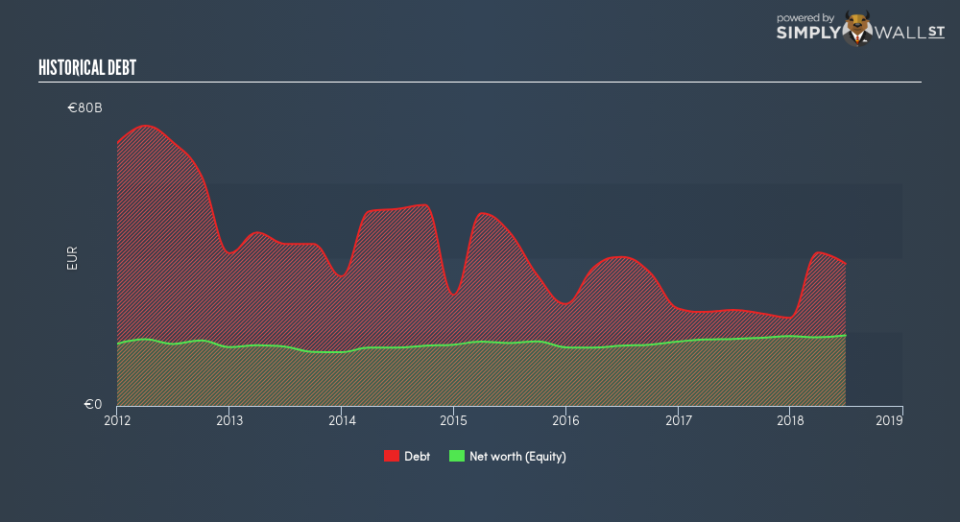Risk Factors You Should Consider Before Investing In KBC Group NV (EBR:KBC)

As a large, commercial bank with a €26b market capitalisation, KBC Group NV (EBR:KBC) takes on risky loans by nature of its operations and incurs credit risk. During the GFC, large banks with risky lending portfolios exposed to the volatile credit market lost billions of dollars’ worth of shareholder equity. The faith of investors in what were once considered blue-chip stocks were undermined. Today we will be looking at the levels of bad debt and liabilities which will give us insights into KBC Group’s engagement with risky lending practices and operational risk. Since the level of risky assets held by the bank impacts its cash flow, it will also determine the attractiveness of it as a stock investment.
View our latest analysis for KBC Group
How Much Risk Is Too Much?
If bad loans comprise of more than 3% of KBC Group’s total loans, it is seen as engaging in risky lending practices above the prudent level. The bank’s profit is impacted by bad loans as these cannot be recovered by the bank and are expensed directly from its bottom line. Since bad loans make up 3.46% of its total assets, which is above the prudent level of 3%, it faces a high chance of default. Given that most banks tend to be well-below this threshold, KBC Group faces a much higher risk level and shows below-averagebad debt management.
Does KBC Group Understand Its Own Risks?
KBC Group’s ability to forecast and provision for its bad loans relatively accurately indicates it has a good understanding of the level of risk it is taking on. The bank has poorly anticipated the factors contributing to higher bad loan levels if it writes off more than 100% of the bad debt it provisioned for. This begs the question – does KBC Group understand the risks it has taken on? With a bad loan to bad debt ratio of 82.33%, KBC Group has under-provisioned by -17.67% which is below the sensible margin of error, illustrating room for improvement in the bank’s forecasting methodology.
How Big Is KBC Group’s Safety Net?


KBC Group makes money by lending out its various forms of borrowings. Deposits from customers tend to bear the lowest risk given the relatively stable amount available and interest rate. Generally, the higher level of deposits a bank retains, the less risky it is deemed to be. KBC Group’s total deposit level of 72% of its total liabilities is within the sensible margin for for financial institutions which generally has a ratio of 50%. This indicates a prudent level of the bank’s safer form of borrowing and a prudent level of risk.
Next Steps:
Although KBC Group’s level of deposits to liabilities level is sufficient, it has taken on risk through high levels of bad debt and poor provisioning for their repayment. This may lead to lower than expected profits for KBC Group. This possibility of an undesirable impact on cash flow lowers our conviction in KBC Group as an investment. Keep in mind that a stock investment requires research on more than just its operational side. I’ve put together three important factors you should look at:
Future Outlook: What are well-informed industry analysts predicting for KBC’s future growth? Take a look at our free research report of analyst consensus for KBC’s outlook.
Valuation: What is KBC worth today? Has the future growth potential already been factored into the price? The intrinsic value infographic in our free research report helps visualize whether KBC is currently mispriced by the market.
Other High-Performing Stocks: Are there other stocks that provide better prospects with proven track records? Explore our free list of these great stocks here.
To help readers see past the short term volatility of the financial market, we aim to bring you a long-term focused research analysis purely driven by fundamental data. Note that our analysis does not factor in the latest price-sensitive company announcements.
The author is an independent contributor and at the time of publication had no position in the stocks mentioned. For errors that warrant correction please contact the editor at editorial-team@simplywallst.com.

